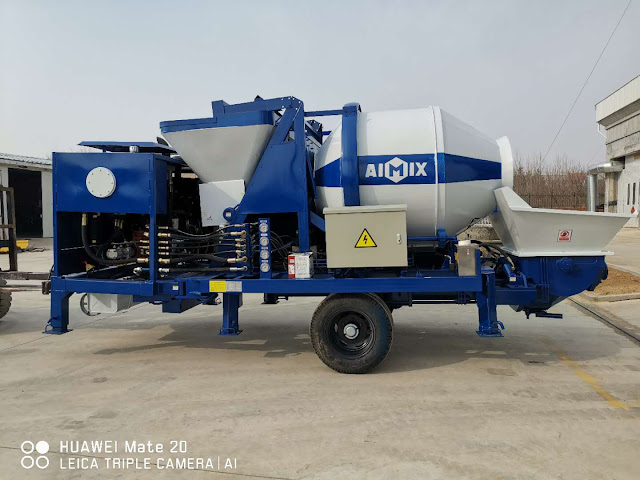How Much Does the Configuration Affect the Output of a Stone Crushing Plant?
In the mining and aggregate industry, the configuration of a stone crushing plant plays a critical role in determining its output and efficiency. Whether you're running a small-scale operation or a large-scale production facility, understanding how configuration impacts output is essential for optimizing performance. In this article, we will explore how the configuration of a stone crushing plant affects its output and efficiency, with a focus on key factors such as equipment selection, plant layout, and material properties.
Factors Influencing the Output of a Stone Crushing Plant
The output of a stone crushing plant(trituradoras de piedra en venta) is determined by several factors, but configuration stands out as one of the most important. The term "configuration" refers to how the components of the plant, such as crushers, screens, conveyors, and other equipment, are arranged and integrated. A well-designed configuration can significantly increase efficiency, reduce downtime, and enhance overall output.
1. Equipment Selection and Crushing Stages
One of the primary factors that affect the output of a stone crushing plant is the type of equipment selected. Different types of crushers are designed to handle different materials and sizes. For example, a stone crusher(chancadora de piedra) used for primary crushing may have a different capacity and function compared to one used for secondary or tertiary crushing.
- Primary Crushers: Jaw crushers are commonly used as primary crushers. They are designed to handle larger pieces of rock and break them down into more manageable sizes. The selection of the correct jaw crusher size and capacity directly affects the throughput of the plant.
- Secondary Crushers: Cone crushers or impact crushers are typically used for secondary crushing. These crushers handle smaller pieces of material and are responsible for further reducing the size of the output from the primary crusher.
- Tertiary Crushers: For even finer material, tertiary crushers, such as vertical shaft impactors (VSIs), are used. They are capable of producing high-quality, finely graded aggregate material.
The arrangement of these crushers in the crushing process determines how efficiently material is processed. If a plant lacks the appropriate crushers for each stage, it may result in bottlenecks, reducing overall output.
2. Plant Layout and Material Flow
The layout of the plant is another critical factor in determining output. A well-organized plant layout ensures that materials move smoothly from one stage to another, minimizing downtime and preventing blockages. Properly placed conveyors, screens, and crushers can reduce unnecessary material handling and improve overall processing efficiency.
For example, if a rock crusher is placed too far from the primary crusher, it may cause delays in material flow. On the other hand, if the crushers are positioned too closely together, it may lead to congestion and inefficient processing. Properly planned distances between crushers, screens, and other components allow for smoother material transfer and reduced downtime.
3. Material Properties and Size
The type and size of the material being fed into the stone crushing plant also have a significant impact on output. Different materials, such as granite, limestone, or basalt, have varying levels of hardness and abrasiveness. Harder materials require more energy to crush, which can affect the plant's efficiency and throughput.
In addition, the size of the material entering the crusher affects its processing. Larger rocks may need to be pre-screened or broken down before entering the crusher to ensure that they fit within the desired size range for further processing. If the material is too large for the crushers, it can cause blockages and slow down the entire plant, resulting in reduced output.
The Role of Automation and Technology in Configuration
In modern stone crushing plants, automation and advanced technology play a vital role in improving output. Automated systems allow for real-time monitoring of plant performance, enabling operators to adjust settings for optimal performance. For example, some plants are equipped with automated crushers that adjust their settings based on the hardness of the material being processed, ensuring efficient crushing without overloading the equipment.
Additionally, the use of digital technologies, such as remote monitoring and predictive maintenance, helps operators identify issues before they lead to downtime. This proactive approach ensures that the plant remains productive and achieves its maximum potential output.
Choosing the Right Configuration for Your Needs
The configuration of your stone crushing plant should be tailored to your specific production needs. For those looking for a high-capacity operation, a larger plant with multiple crushers and high-throughput conveyors may be necessary. On the other hand, smaller operations may benefit from a more compact configuration, such as a rock crusher(trituradora de roca) with a portable design.
When selecting equipment and planning your plant layout, it's essential to consider factors such as:
- Material type: Harder materials require more robust crushers and more stages of crushing.
- Production capacity: High-output plants need efficient layouts and high-capacity crushers.
- Plant mobility: A stone crushers for sale offering portable designs can be a good option for operations that require flexibility.
Conclusion
The configuration of a stone crushing plant is a critical factor in determining its output. From selecting the right crushers to designing an efficient layout and optimizing material flow, every aspect of the plant configuration affects its efficiency and productivity. By carefully considering these factors and tailoring the configuration to your specific needs, you can significantly enhance the performance of your stone crushing plant.
Whether you're looking to scale up your production or optimize an existing setup, investing in the right configuration and equipment is essential for maximizing output and ensuring long-term success in the aggregate industry.




Comments
Post a Comment